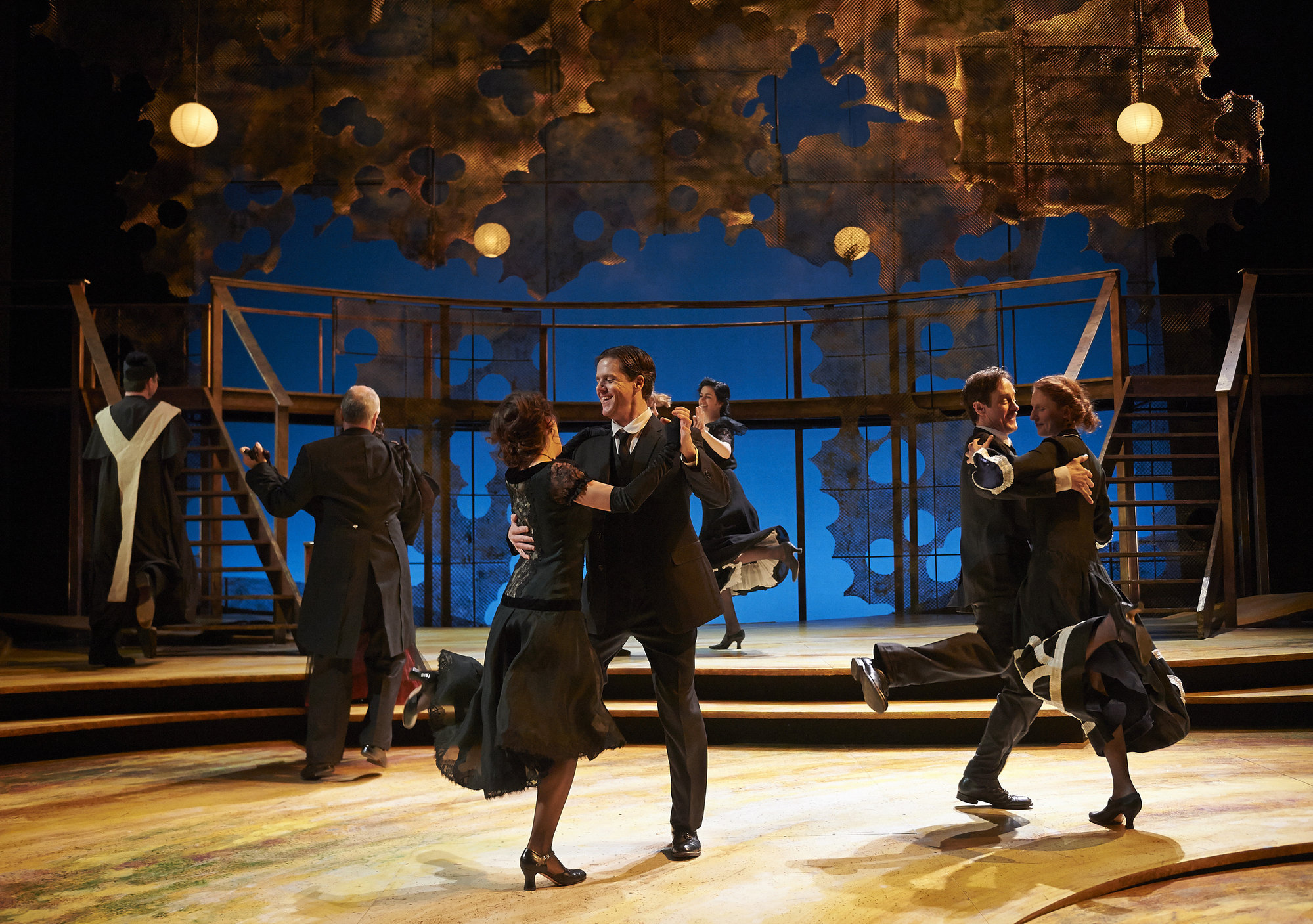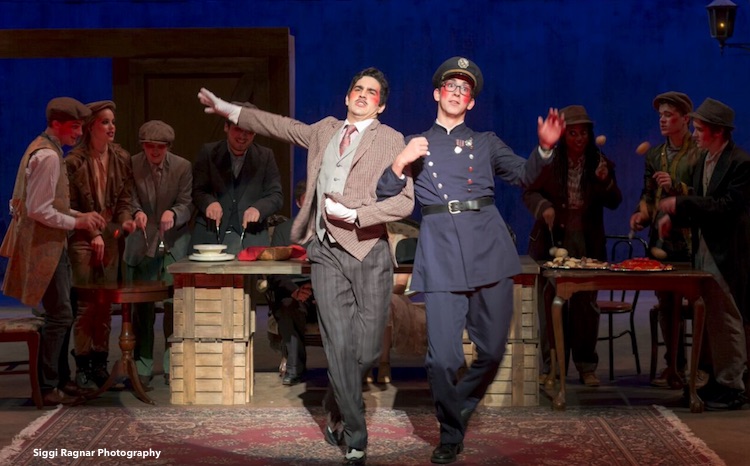This image, from Lin-Manuel Miranda's
Hamilton, features low lighting, a blue-wash, and swirling gobos. The scene features Eliza singing about her husband's betrayal, burning the letters he wrote her. The scene is passionate and sad, with Eliza crushed over Hamilton's cheating. The lighting here exemplifies that well--it is easy for the audience to understand the hurt and despair Eliza is feeling at this point in the show.
This image is from Jonathan Larson's RENT, featuring very harsh, isolating lighting around each character on stage. This is a moment in the show where various cast members, portraying AIDS/HIV patients, sing out, wondering if they are alone in the world--and if anyone will care if they die. This lighting shows this literally--each cast member is alone in their own square of light. Along with this, there is no other lighting on the stage. No other wash, just blackness. This is a simple, powerful example of mood lighting.














































